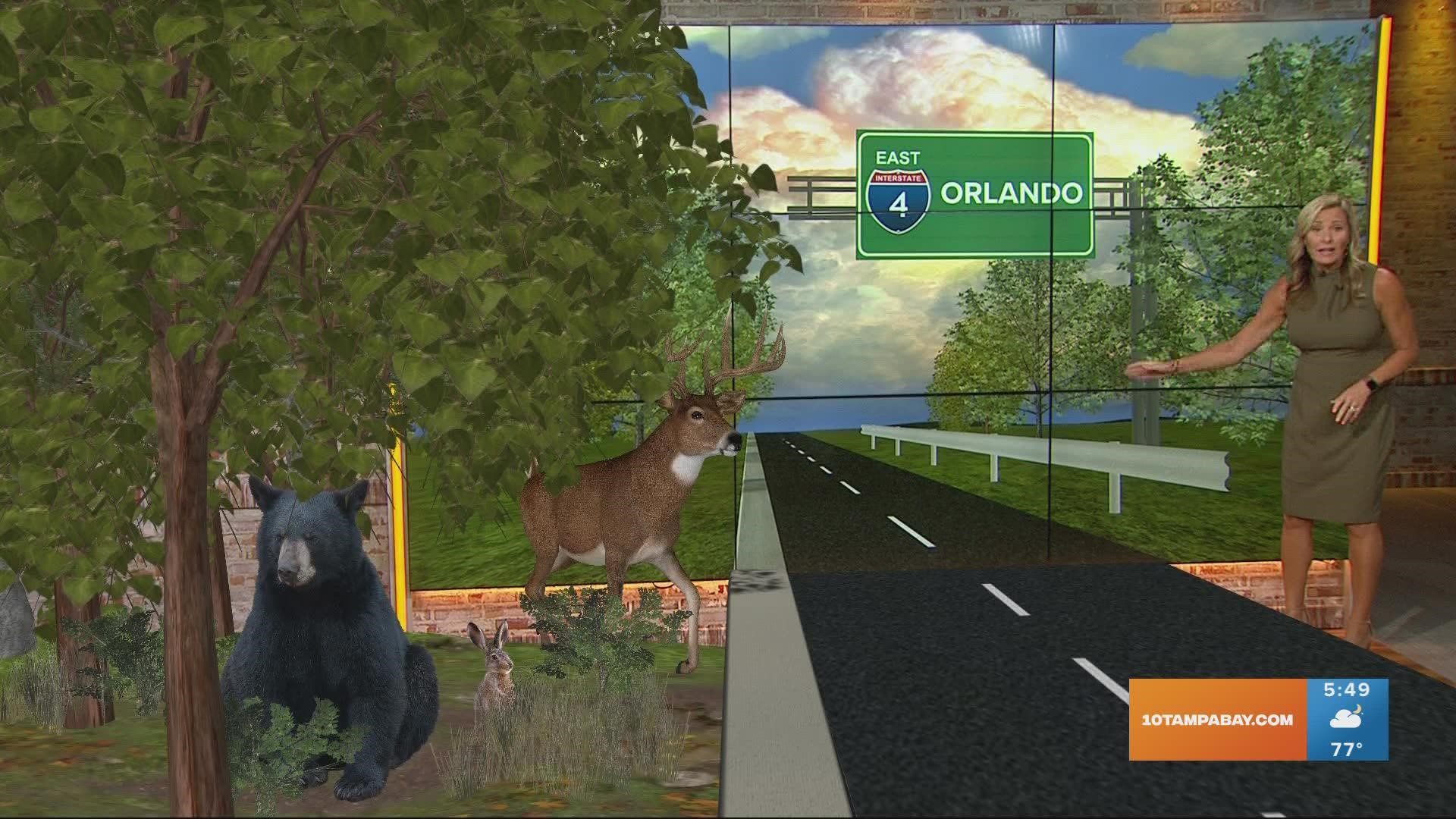POLK COUNTY, Fla. — When you think of Florida, many people think of our beautiful beaches, but all throughout our state is an 18-million-acre wildlife corridor. It's home to all kinds of animal and aquatic life.
It's wildlife that needs to be able to wander freely away from the busy cities and highways but one highway, in particular, has severed that connection.
Interstate 4 was constructed 50 years ago right here in central Florida to make it easier for drivers to get from one side of the state to the other, but that made it harder for animals.
Brent Setchell is an engineer with the Florida Department of Transportation: "I-4 is a major barrier to wildlife movement. So there are over 100,000 vehicles a day on there and if wildlife did try to cross the road, they would likely be unsuccessful and motorists would probably hit them or they could swerve so for motorists' safety."
He says it took 25 years of planning and watching the movement of one black bear to finally make a wildlife crossing under this major highway a reality.
M-34 is a black bear that was tagged with a GPS south of I-4. As they tracked his movements to find a mate and get food, Setchell says they noticed one major obstacle.
"Eventually it couldn't find a way across I-4 and eventually turned south and went back and ended up on the dyke of Lake Okeechobee," Setchell said.
Some people are passionate about preserving Florida's natural environment and wildlife, while others are encouraging all of the growth we're seeing throughout the state and our economy. But some believe that this project shows there's a way to marry them both.
"We recognize that we have to advance our economy. We recognize that we have a thousand people moving here a day. We like that and we think that we can balance the two out, so that we can have, in essence, what would be Noah's Ark forever in the state of Florida," said businessman Arnie Bellini, who's part of the Florida Wildlife Corridor Foundation. He believes our state is getting it right.
"We're very committed to working with all agencies and all governments to co-create a green infrastructure plan in the state of Florida."
FDOT hopes to have the wildlife crossing fully open and ready to cross by next summer, with fencing to guide the animals to it.
Bellini says it won't take long for the animals to find it: "And once a few animals take it and there's a scent trail there and there's a path, an animal path that's made... it's like a highway. It's like they created a new highway, so it doesn't take very long before they find their way."
Bellini just invested millions to help launch the Live Wildly campaign. It's a tool to teach locals and visitors about the wildlife corridor, including recreational opportunities like hiking, biking and camping.

